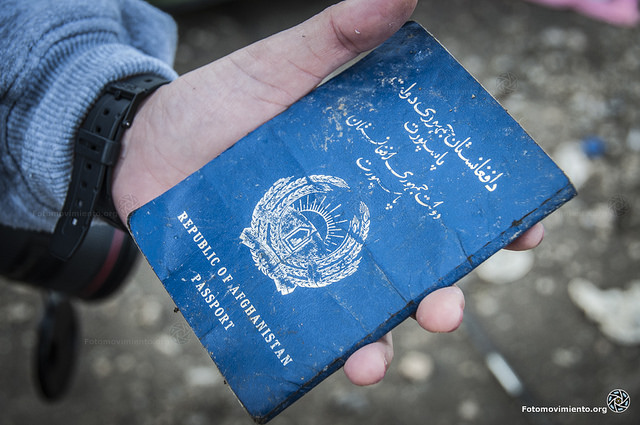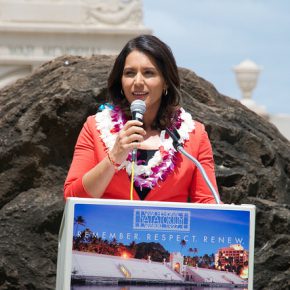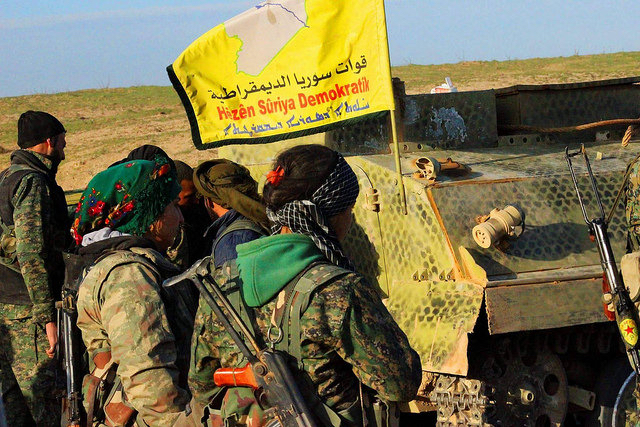As borders tighten along the Western Balkans route, more lone female refugees are arriving in Serbia having experienced violence and trafficking. Many who want to continue on are using riskier routes and never appear in official data.
BELGRADE – Like many female refugees, Maryam would rather speak about other women who have fled their countries than share her own story. “We have come to the point of no return,” said the mother in her late 20s, tears rolling down her cheeks. “We women have endured a lot.”
It was February in Belgrade, and the Afghan refugee had just crossed over the border with Kosovo. She trudged to the Serbian capital in the thick of the winter, taking turns with her husband to carry their two children.
As she absorbed her unfamiliar surroundings, it dawned on Maryam how far she was from her Kandahar home; she began to convulse in panic. She regained her composure and apologized profusely. “I must not reveal any weakness in front of my children,” she said.
The family’s convoluted route to Europe started in the summer of 2015. They crossed the border to Iran and trekked to the Turkish coast. They crossed the Aegean Sea to Greece, before traveling northward through Albania, then Kosovo and Serbia, hoping to pass through Hungary and finally reach Austria.
“There were women we traveled with who were on their own. They disappeared in some of the forests,” Maryam said.
With borders along the Western Balkans route largely closed, there was no simple way forward for the family. They had run out of money, having handed over their life savings to people smugglers.
To add to their woes, last week Hungary passed a new set of anti-migration laws to prevent non-Europeans who do not intend to apply for asylum in the country from passing through its territory.
The laws also formalize the mandatory detention of asylum seekers, including children aged 14 and over, who will be kept in converted shipping containers in so-called transit zones. A practice that rights groups have been contesting as “illegal” under European human rights laws is poised to become systematic.
If they manage to enter Hungary, Maryam and her family will likely be denied asylum and detained for an indefinite period – or sent back to Serbia.
Anti-migration laws along the Balkan route are making it harder for migrants to apply for asylum or legally cross borders, forcing asylum seekers to take even more extreme measures to reach their intended destinations.
This leaves women and girls ever more susceptible to abuse and trafficking, according to Sonja Toskovic of the Belgrade Centre for Human Rights (BCHR), who co-authored a gender analysis report on the Serbian asylum system in 2016 with researchers at Oxfam and U.N. Women. The Western Balkans route has become mainland Europe’s outsourced frontier.
The grim realization that she and her family could be stranded in Serbia indefinitely had a disorienting effect on Maryam, who had never left her local community before leaving for Europe.
Wrapped in several blankets and holding a warm cup of tea in the “safe corner” of Infopark, a local Serbian NGO, Maryam watched her family, her eyes darting from the children huddled on a couch to the bright decoration of the playpen in the room and her husband, who was pacing back and forth.
“I cannot bring myself to even think about it, let alone share what I saw along my journey,” she said.
Thanks to a combination of social stigma, personal shame and concern for the welfare of their children, many refugee women do not share their own stories of abuse and violence.
Smuggled Via Serbia
As a result of lingering hostilities from the Balkan wars, Serbia and Kosovo have a tempestuous relationship and trade restrictions limit the flow of goods across the border.
But over the past several years, the clandestine movement of people – most of them asylum seekers – has become a lucrative trade for smugglers on both sides of the border, who usually partner with nationals of refugee-producing countries such as Afghanistan and Syria.
A well-connected network of smugglers transported Maryam and her family as if they were illicit goods. While the increasing clampdowns have made the journey a hard sell, those like Maryam’s family, who are desperate to reach Europe and are unaware of the border closures, pay hefty sums ahead of their journeys.
When Maryam’s family arrived in Greece, the smugglers told them that they would be taken through Albania, Kosovo, Serbia and Hungary – and finally to Austria.
Arriving in Serbia in February, the husband and wife were distraught. Over several days, the couple grappled with the legal and logistical impediments to their reaching Austria, where they had hoped to apply for asylum. They felt duped into paying their life savings to smugglers, only to be stranded in a country outside the European Union with one of the highest rates of “brain drain” and few opportunities.
Serbia has granted asylum to 41 people since 2008 when its asylum law went into effect, according to Bogdan Krasic, a researcher at the BCHR.With few social and economic integration programs for people seeking asylum, this record dissuades most refugees from applying.
A day after Maryam and her family arrived in Belgrade, they had already begun contacting local smugglers in an attempt to continue their journey.
More Women on the Move
Atina and the BCHR found that as borders have tightened along the route, an increasing number of lone women and children have entered Serbia over the past three years. Many of them have experienced abuse, violence or trafficking.
According to the BCHR’s gender analysis report, 153,476 women were among 577,995 people registered as “aliens” in Serbia in 2015 – an exponential increase in both number and proportion from the previous year, when 1,721 women were among 16,490 arrivals.
Among the 226 women interviewed for the BCHR report, 56 percent were reported as “traveling alone.”
While about 2,500 single women and mothers with young children were registered as asylum seekers in Serbia in 2016, according to Toskovic, there are other unregistered female migrants who do not appear in the statistics, the BCHR states. Many of these women are invisible in the system and hence even more vulnerable.
The changing demographics of people arriving in Serbia – more lone women and minors – and their undefined legal status under tightening migration laws have increased the incidence of survival sex, trafficking and other forms of exploitation and abuse.
“Due to the ad hoc solutions that Serbia has adopted, the temporary centers are not enough to protect the women who come from different cultures, different countries and with different needs,” the BCHR’s Toskovic said.
“In cases where it is not clear that these women are with their real families, or if they were in a trafficking situation, we offer legal aid, while organizations like Atina provide shelter where the women can feel safe enough to share their stories,” she added.
Atina is the only organization in Serbia providing safe houses for female migrants. It receives almost daily cases of physical abuse both within and outside the camps in Serbia. Many of the women and girls claim that when they started the journey “nobody [among the smugglers] asked them how they would pay for the journey, as it was assumed that they would pay through sexual services,” said Hrnjak.
Confirming cases of abuse and helping the victims has not been easy for local and international NGOs.
“Because of cultural norms, and dependence on the male members of the family, many of these women are not willing to speak directly, or if they want to speak then there is a male person in front of the whole group who is speaking with us,” said Toskovic. “It’s very hard to get access to the ladies within group settings and to explain potential risks to them and how can we help them.”
Open Letters
Inside the Atina office in Belgrade, there is an assortment of letters posted on a noticeboard. They were written by female refugees who sought shelter through the organization. As part of a trust-building exercise, the women wrote anonymously about their experiences and tribulations while on the move.
The “open letter activity was one of the techniques we used to understand what they are going through, in order to help them,” explained Hrnjak.
“In addition to women being subdued by the patriarchal system around them, the lack of basic services, clear information, gender sensitivity and [awareness of] risks of smuggling and exploitation are just some of the challenges,” explains Atina’s summary of the Open Letter program.
Atina was founded 14 years ago amid a different type of displacement – the end of the Balkan wars and the return of citizens who had fled Serbia. Among them were women who had lost their husbands, support systems and had fallen victim to wartime rape and other violence.
In recent years, amid increasing numbers of female refugees crossing Serbia, the organization has aided women and girls from countries including Syria, Afghanistan, Iran, Somalia, Nigeria and Ethiopia.
The entire route, from Greece through the Balkan countries, is riddled with risks of being trafficked. Yet Serbia is a place where many women end up because they run out of money, face closed borders or become separated from family members.
Statistics related to trafficking in Serbia are difficult to ascertain because of limited resources and time constraints – as the women often move on quickly – and because many women never appear on official registers. Serbia must find ways of protecting them outside the confines of the asylum system, both Hrnjak and Toskovic said.
The lack of protection for female refugees is part of a global challenge. With the international humanitarian response system imploding amid climbing levels of displacement, rights groups are worried that gender-based violence is becoming normalized for displaced women.
In 2015 the Women’s Refugee Commission (WRC) led a global call to action urging governments to adhere to a five-year roadmap for a systematic overhaul of gender-based responses during emergencies.
“It is not just about protection … but also providing livelihoods, education and the means to survive. These crucial elements can reduce the risk of women and minors from being trafficked,” Marcy Hersh at WRC told Refugees Deeply. “The policy initiatives exist; it is a matter of implementing them.”
Lone Children
The staff at Infopark have continued to welcome new arrivals – families like that of Maryam but also an increasing number of unaccompanied children.
“Unlike previous years when many Syrians came through with families, these children are coming from Afghanistan, where the conditions keep worsening every year,” said Infopark coordinator Gordan Paunovic.
While a group of teenage girls from Iran and Afghanistan were immersed in a German-language lesson in the common area, a nine-year-old boy sat on his own.
He had been traveling without his family and just arrived in Serbia, with a large group of Afghans. He had been sent back from Croatia by border police who had doused him in ice-cold water, according to adults in the group. The temperature that day hovered at –13C (8F). The boy turned up at the door of the NGO with plastic bags around his shoes that had served as galoshes during the long trek.
This article originally appeared on Refugees Deeply, and you can find the original here. For important news about displacement and forced migration, you can sign up to the Refugees Deeply email list.
Photograph courtesy of Fotomovimiento. Published under a Creative Commons license.





